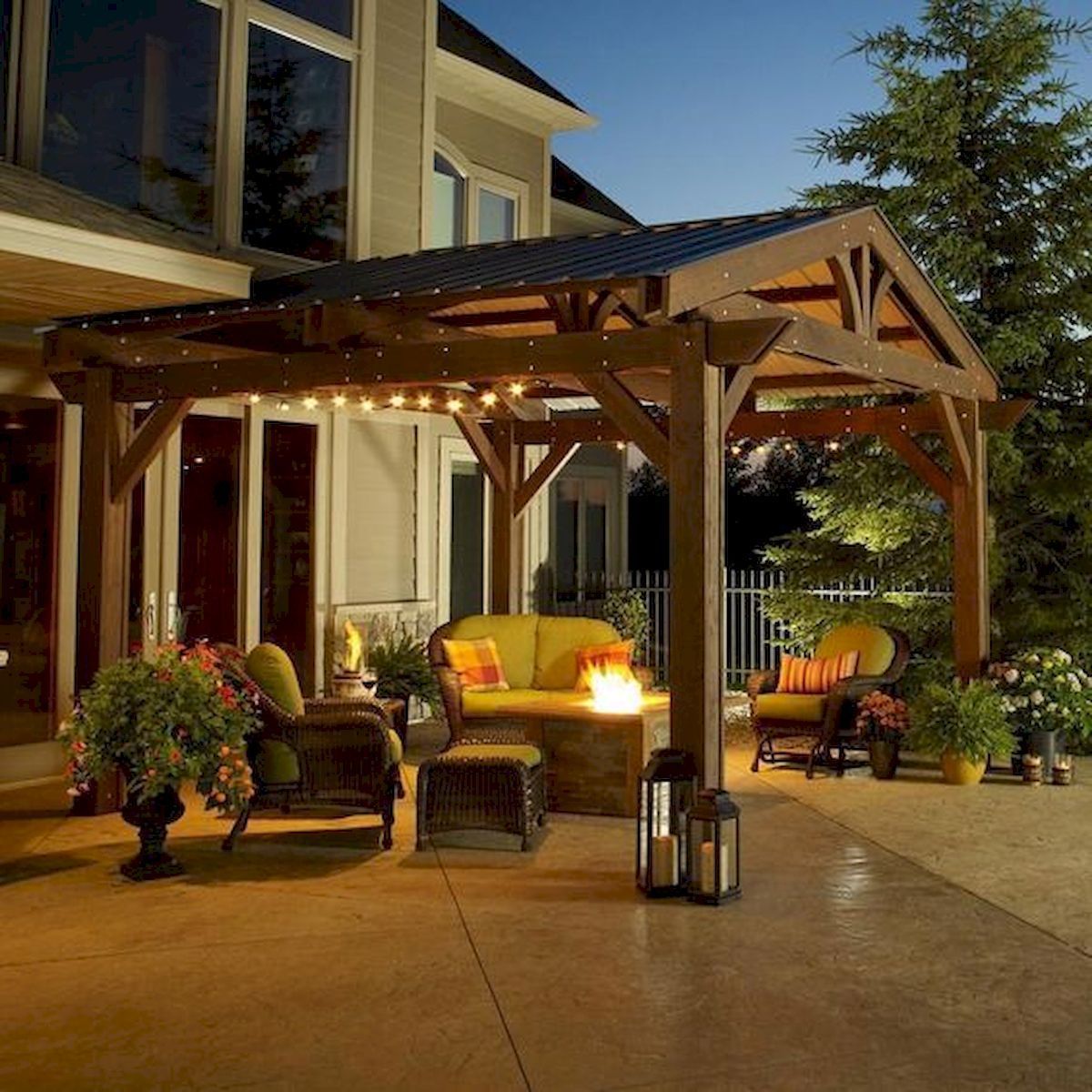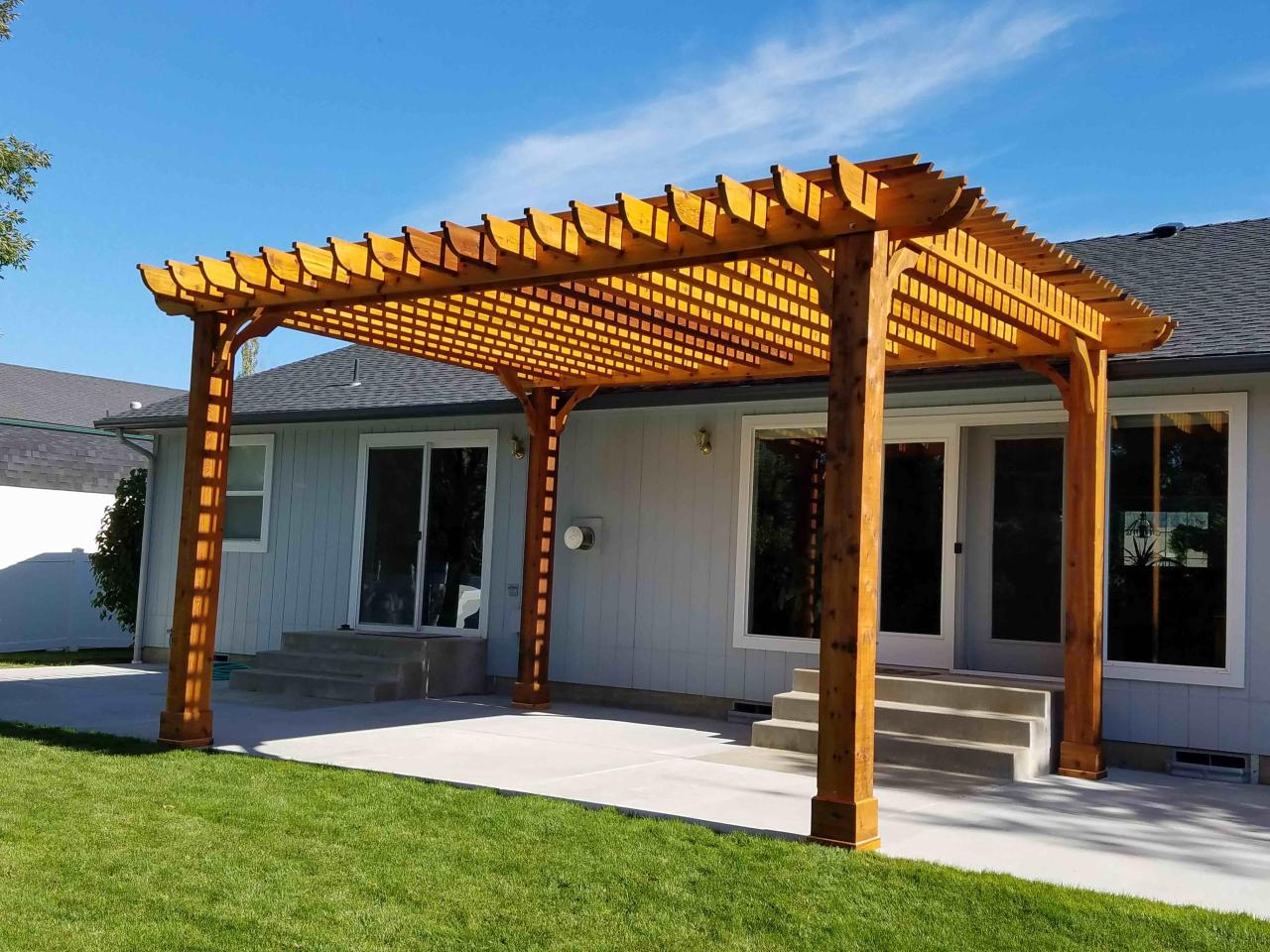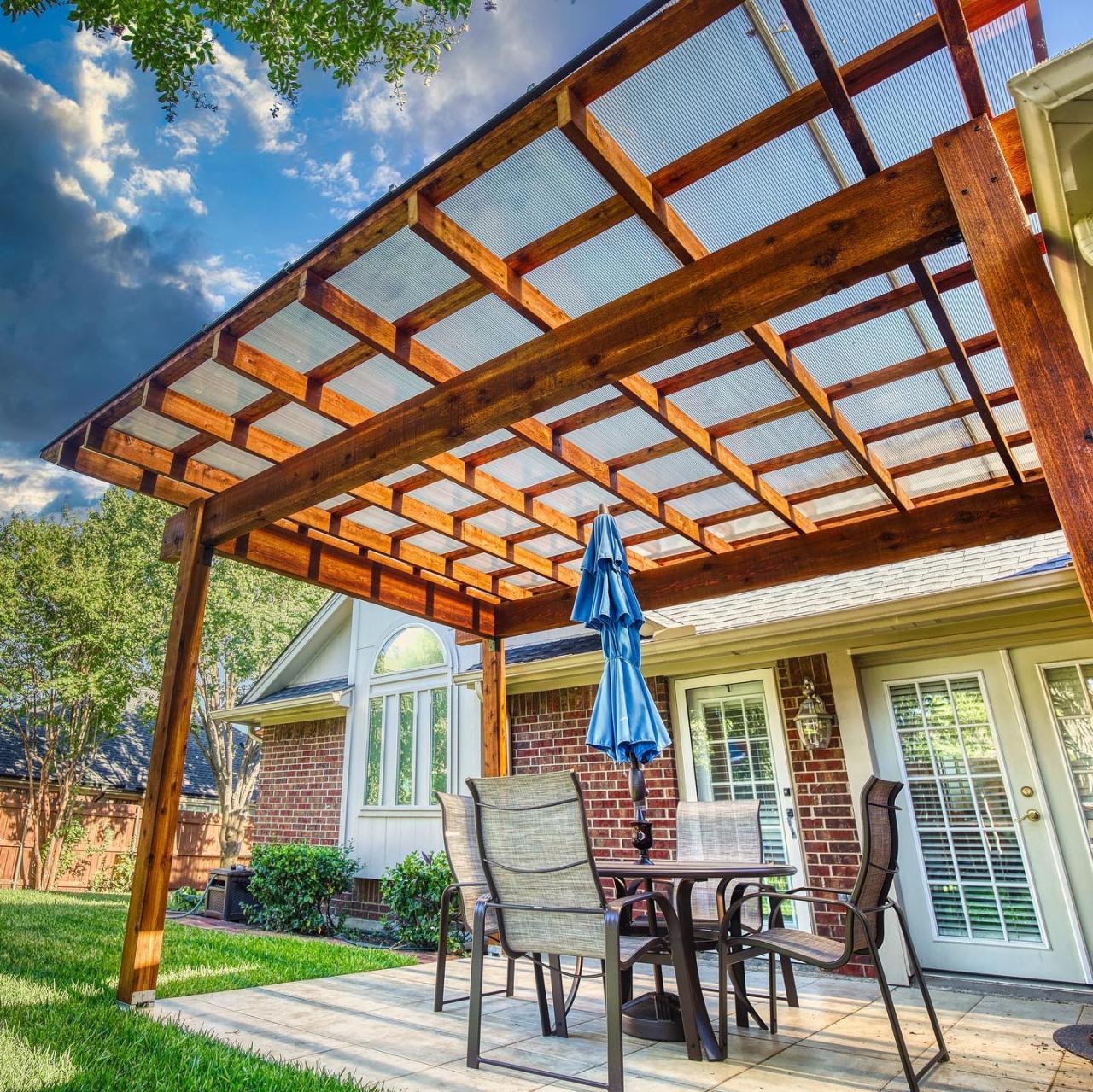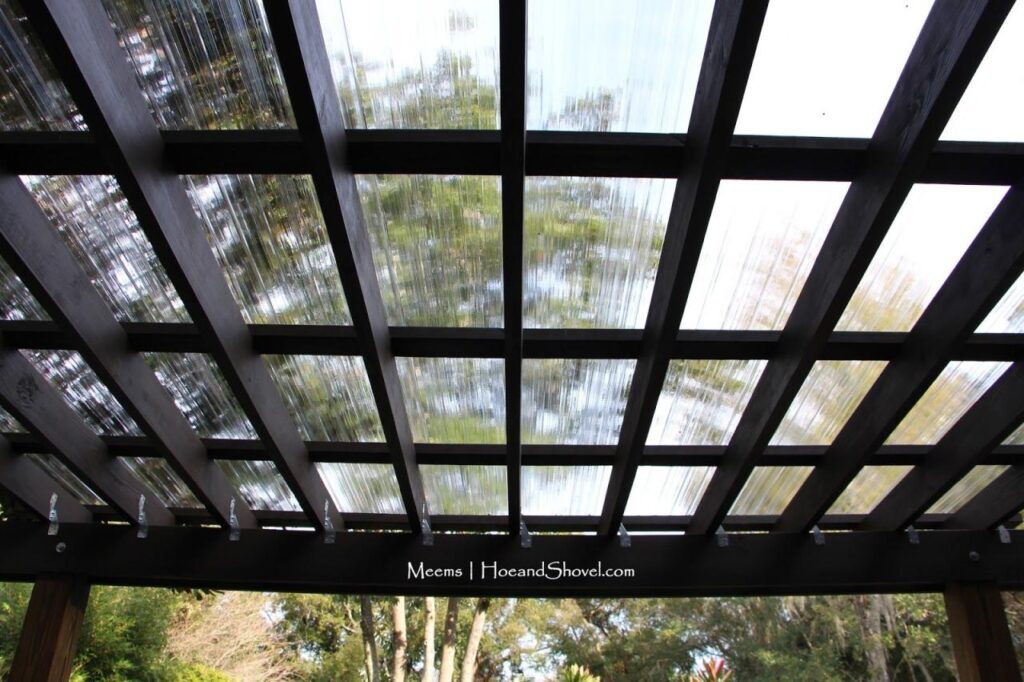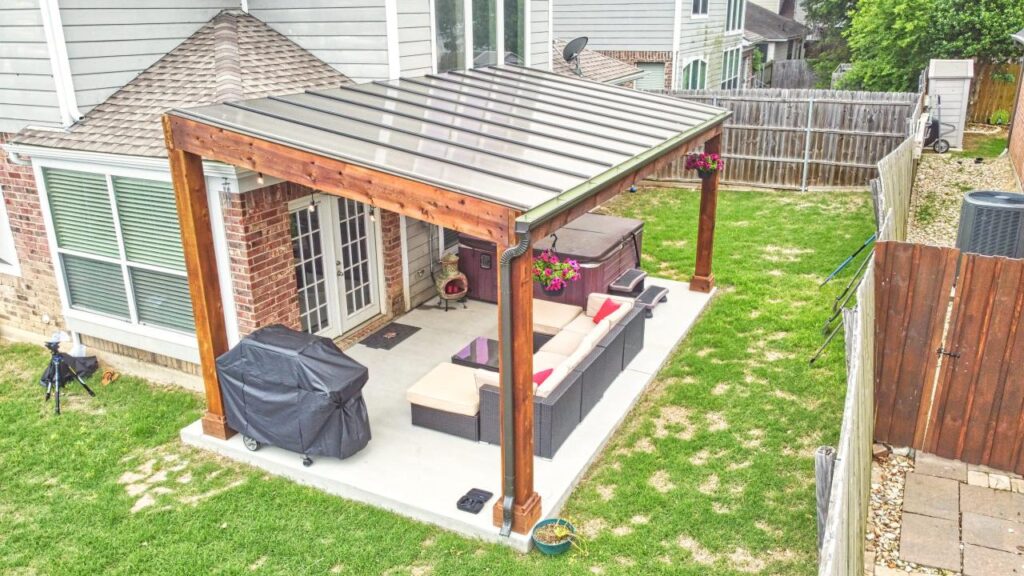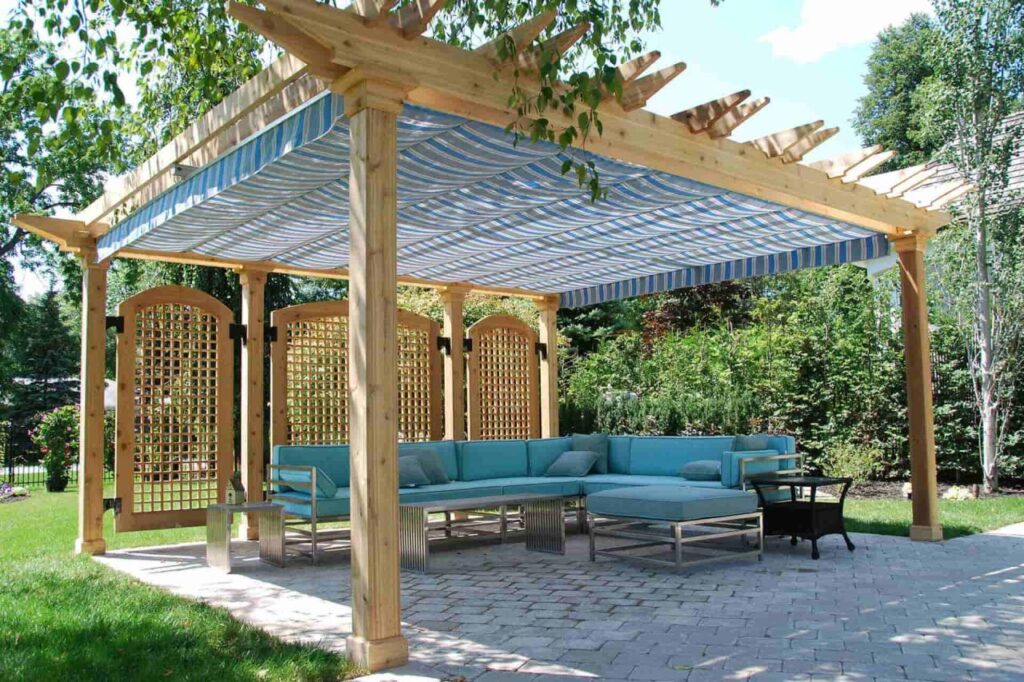Covered pergolas on decks are a stylish and functional addition to any outdoor space. They provide shade, protection from the elements, and extend the outdoor living season. With a variety of design styles, materials, and features to choose from, there’s a covered pergola on deck to suit every taste and need.
This guide will provide you with everything you need to know about covered pergolas on decks, from design considerations to installation and maintenance. We’ll also discuss the benefits and drawbacks of having a covered pergola on your deck, so you can make an informed decision about whether or not this is the right addition for your home.
Design Considerations
Covered pergolas on decks come in a variety of design styles, from traditional to contemporary. The best style for your deck will depend on the size and shape of the deck, the desired level of shade, and the overall aesthetic of your home.
Traditional covered pergolas are typically made of wood and feature a lattice roof. They can be freestanding or attached to the house. Contemporary covered pergolas are often made of metal or fabric and feature a more modern design. They can be freestanding or attached to the house, and they can be customized to fit any size or shape of deck.
Factors to Consider
When choosing a design for your covered pergola, there are a few factors to consider:
- The size and shape of your deck. A large deck will require a larger pergola, while a small deck will be better suited for a smaller pergola. The shape of your deck will also affect the design of your pergola.
- The desired level of shade. If you want a lot of shade, you will need to choose a pergola with a solid roof. If you want less shade, you can choose a pergola with a lattice roof or a fabric roof.
- The overall aesthetic of your home. The design of your pergola should complement the style of your home. If you have a traditional home, you will want to choose a traditional pergola. If you have a contemporary home, you will want to choose a contemporary pergola.
Materials and Construction
The choice of materials for building a covered pergola on a deck depends on factors such as durability, maintenance requirements, and cost. The most common materials used are wood, vinyl, and aluminum.
Wood
Wood is a traditional and versatile material for pergolas. It offers natural beauty and warmth, and it can be stained or painted to match any décor. However, wood requires regular maintenance to protect it from rot and decay, and it can be susceptible to insect damage.
A covered pergola on your deck provides a cozy and shaded outdoor space to relax and enjoy the outdoors. Pergola are available in a variety of styles and materials, so you can find one that perfectly matches your home and décor.
They can also be customized with features such as lighting, fans, and screens to create the perfect outdoor oasis. A covered pergola on your deck is a great way to extend your living space and enjoy the outdoors all year long.
Vinyl
Vinyl is a low-maintenance material that is resistant to rot, decay, and insects. It is also available in a variety of colors and styles, making it a versatile option for any deck. However, vinyl can be more expensive than wood, and it can fade over time.
Aluminum
Aluminum is a durable and lightweight material that is resistant to rust and corrosion. It is also low-maintenance and can be painted to match any décor. However, aluminum can be more expensive than wood or vinyl, and it can be dented or scratched.
Functionality and Features: Covered Pergola On Deck
Covered pergolas on decks can be enhanced with various functional features that increase their usability and enjoyment. These features range from practical elements like lighting and fans to aesthetic additions like screens and curtains.
Covered pergolas on decks provide shade and shelter, enhancing outdoor living spaces. However, over time, pergola covers may deteriorate and require replacement. For a durable and aesthetically pleasing solution, consider pergola cover replacement services. With a wide range of materials and styles available, you can restore the beauty and functionality of your covered pergola on deck, creating a welcoming and comfortable outdoor oasis.
By incorporating these features, homeowners can create a comfortable and inviting outdoor space that can be enjoyed throughout the year.
Lighting
- Ambient lighting: Creates a warm and inviting atmosphere, making the pergola a cozy spot for evening gatherings.
- Task lighting: Illuminates specific areas, such as a dining table or grill, for convenience and safety.
- Accent lighting: Highlights architectural features or plants, adding visual interest and creating a unique ambiance.
Fans
- Ceiling fans: Provide air circulation and cooling, making the pergola a comfortable retreat even on hot days.
- Wall-mounted fans: Offer a more localized cooling effect, directing airflow to specific areas.
- Misting fans: Release a fine mist of water, providing additional cooling and creating a refreshing outdoor oasis.
Screens and Curtains
- Privacy screens: Provide seclusion from neighboring properties or create designated areas within the pergola.
- Sun screens: Protect from harmful UV rays and reduce heat gain, making the pergola a more comfortable space during the day.
- Curtains: Add a touch of elegance and can be used to block out wind or rain, extending the pergola’s usability in inclement weather.
Installation and Maintenance
Installing and maintaining a covered pergola on a deck requires careful planning and attention to detail. Proper installation ensures structural integrity and durability, while regular maintenance keeps the pergola in good condition and extends its lifespan.
Step-by-Step Installation
To install a covered pergola on a deck, follow these steps:
- Plan and Prepare: Determine the size, shape, and style of the pergola. Prepare the deck surface by removing any existing structures or obstacles.
- Build the Posts: Dig holes for the posts and set them in concrete. Ensure they are level and plumb.
- Install the Beams: Attach the beams to the posts using joist hangers or brackets.
- Create the Rafters: Cut and assemble the rafters, then attach them to the beams.
- Install the Roofing: Choose a suitable roofing material, such as polycarbonate panels or shingles, and install it over the rafters.
Tools and Materials
The tools and materials required for installing a covered pergola on a deck include:
- Measuring tape, level, and chalk line
- Concrete mix and gravel
- Drill, screws, and joist hangers
- Posts, beams, and rafters
- Roofing material (e.g., polycarbonate panels or shingles)
- Safety glasses, gloves, and hard hat
Safety Precautions
When installing a covered pergola on a deck, it is essential to take safety precautions:
- Wear appropriate safety gear, including safety glasses, gloves, and a hard hat.
- Use a ladder or scaffolding for working at heights.
- Secure the pergola to the deck using hurricane ties or other appropriate fasteners.
- Follow manufacturer’s instructions for installing the roofing material.
Ongoing Maintenance
To maintain a covered pergola on a deck, regular maintenance is necessary:
- Inspect the Pergola: Check the posts, beams, rafters, and roofing for any signs of damage or wear.
- Clean the Pergola: Remove dirt, debris, and leaves from the pergola using a soft brush or cloth.
- Re-stain or Paint: If the pergola is made of wood, re-stain or paint it periodically to protect it from the elements.
- Tighten Loose Screws: Inspect the screws and bolts regularly and tighten any loose ones.
Landscaping and Decor
Transform your covered pergola on the deck into an oasis of beauty and comfort with thoughtful landscaping and decor. Embrace the natural elements by incorporating lush plants and vibrant flowers, creating a harmonious blend of nature and architecture.
Landscaping Ideas
- Climbing Plants: Train vines like ivy, clematis, or wisteria to climb the pergola’s posts, adding a touch of vertical greenery and privacy.
- Flowering Plants: Surround the pergola with blooming plants like roses, hydrangeas, or geraniums, creating a vibrant and fragrant display.
- Hardscaping: Consider adding a stone or brick walkway leading to the pergola, creating a defined path and adding visual interest.
Decorating the Pergola, Covered pergola on deck
Enhance the ambiance of your pergola with stylish decor that complements its surroundings. Choose lighting, furniture, and accessories that reflect your personal style and create a welcoming outdoor space.
Lighting
- String Lights: Create a magical atmosphere with string lights draped over the pergola’s beams, casting a warm and inviting glow.
- Lanterns: Hang lanterns from the pergola’s roof or posts, providing soft and ambient lighting for evening gatherings.
- Wall Scones: Install wall scones on the pergola’s posts for focused lighting that illuminates specific areas, such as seating or dining spaces.
Furniture
- Lounge Chairs: Opt for comfortable lounge chairs with plush cushions, creating a relaxing spot for lounging and enjoying the outdoors.
- Dining Table: If you plan to entertain, consider a dining table and chairs, allowing you to host meals al fresco under the pergola’s shade.
- Swing Chair: Add a touch of whimsy with a swing chair suspended from the pergola’s beams, providing a cozy and relaxing retreat.
Accessories
- Curtains: Hang sheer curtains from the pergola’s posts, providing privacy and protection from the sun or wind.
- Pillows and Throws: Add comfort and style with colorful pillows and throws, creating a cozy and inviting ambiance.
- Outdoor Rug: Define the space under the pergola with an outdoor rug, adding a touch of texture and pattern to the decor.
Benefits and Drawbacks
Covered pergolas on decks offer a range of advantages and potential drawbacks that homeowners should consider before installation.
Benefits:
- Shade and Sun Protection: Covered pergolas provide shade from the sun, creating a comfortable outdoor space during hot and sunny days. They can extend the outdoor living season by allowing homeowners to enjoy their decks even during peak sunlight hours.
- Protection from the Elements: Pergolas offer protection from rain, snow, and wind. This allows homeowners to use their decks in various weather conditions, extending the functionality of their outdoor space.
- Aesthetic Appeal: Covered pergolas can enhance the aesthetic appeal of a deck and the overall property. They create a visually appealing outdoor space that can be customized to match the home’s architectural style.
- Increased Property Value: A well-designed and constructed covered pergola can increase the resale value of a home by adding an additional feature that enhances the outdoor living space.
Drawbacks:
- Cost: Covered pergolas can be expensive to install, depending on the size, materials, and complexity of the design. The cost can vary significantly based on factors such as the materials used, labor costs, and any additional features or customizations.
- Maintenance: Covered pergolas require regular maintenance to ensure their longevity and appearance. This may include cleaning, staining or painting, and repairing any damaged components.
- Impact on Resale Value: While a covered pergola can increase the resale value of a home, it is important to consider the specific market and buyer preferences. In some cases, a covered pergola may not be as desirable or may not add as much value as expected.
Conclusion
Covered pergolas on decks are a beautiful and practical way to enjoy your outdoor space year-round. With careful planning and installation, you can create a pergola that will be a focal point of your backyard for years to come.

